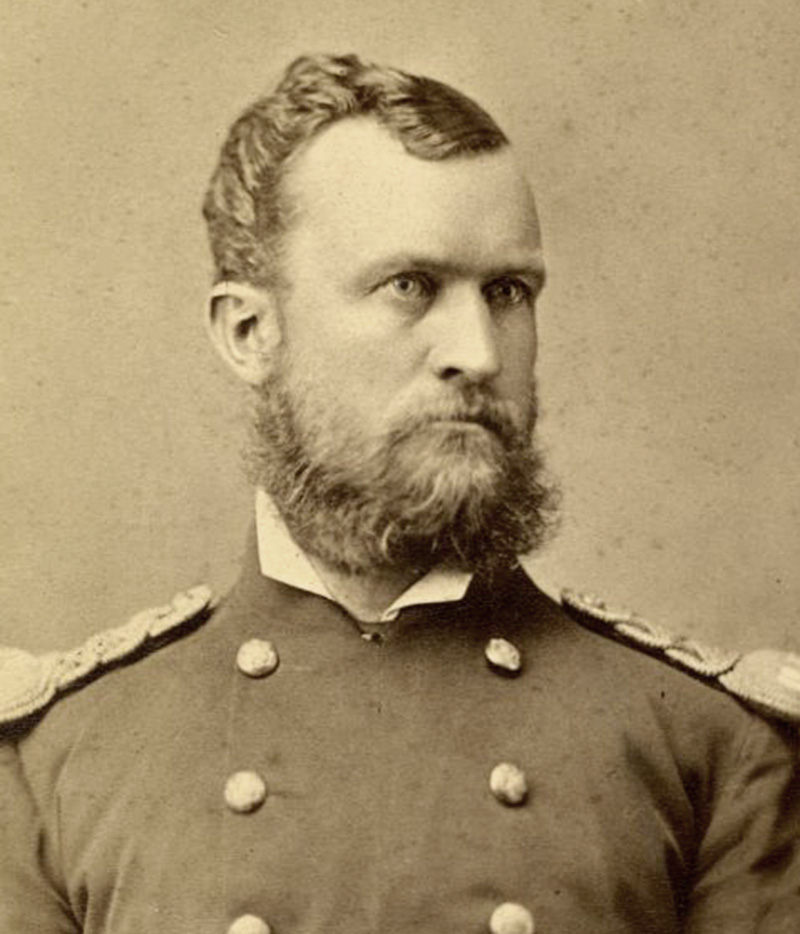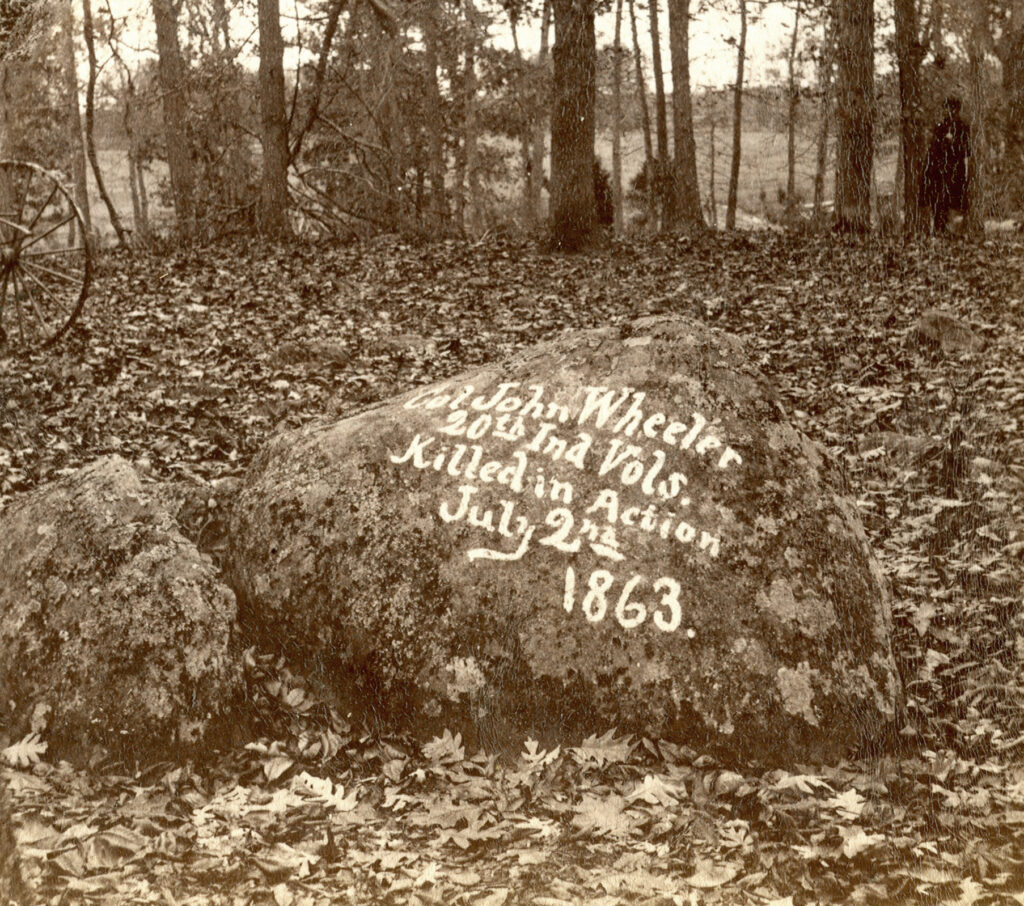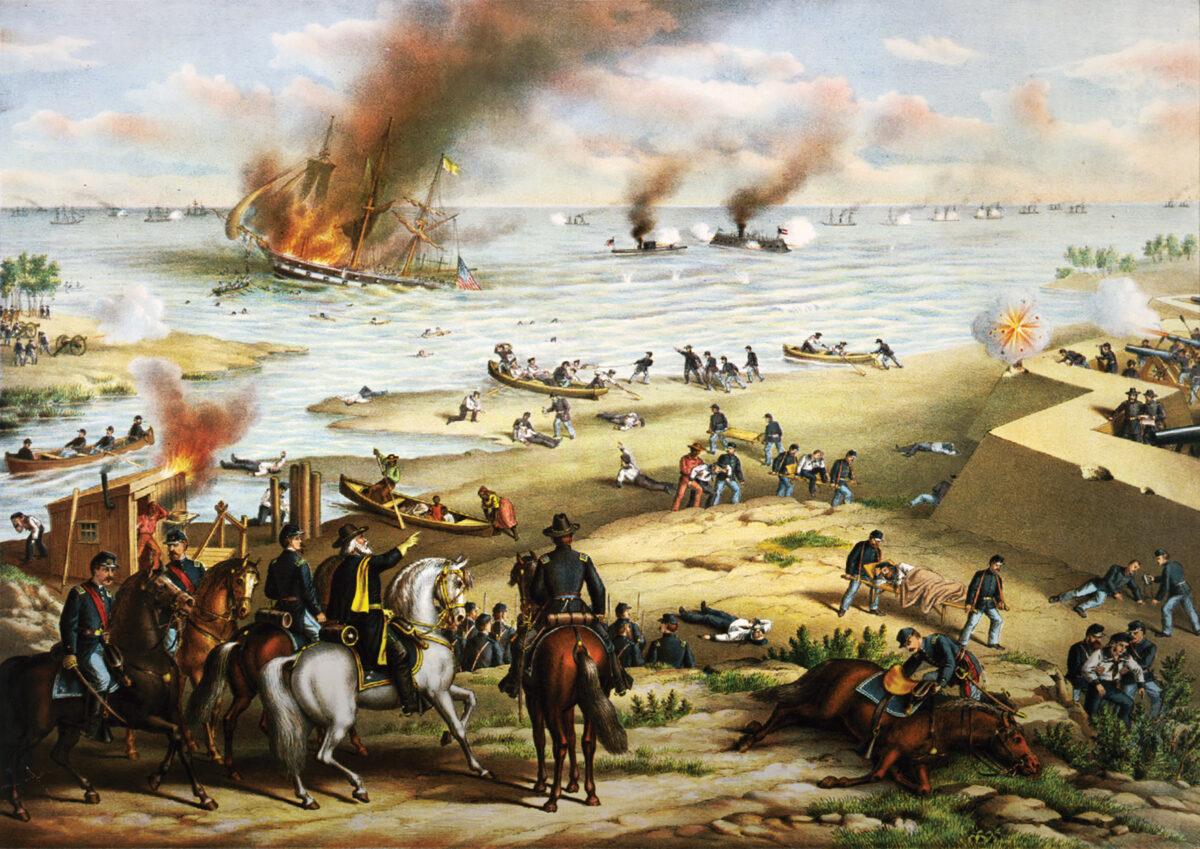Writing home in the early morning hours of July 2, 1863, it likely crossed John Wheeler’s mind that this might be the last letter he would ever write. Wary of the impending combat he and his men were about to face on Gettysburg’s second day, the 20th Indiana Infantry’s colonel could be forgiven for such somber reflection. Two years earlier, as war clouds loomed over the fractured nation, Wheeler had been editor (and co-founder) of his home state’s Crown Point Register, proclaiming on its masthead, “Independent in all things—Neutral in nothing.” It was a supplication he had also lived by as a soldier and commander.
Early in the war, Wheeler—a distant relative of eventual Confederate cavalry general Joseph Wheeler—raised a 100-man company and was elected captain. Among those to enlist were the sons of a family friend: Albert Luther and his brother John, vice president of a local bank.
Spearheading the region’s prolific recruitment effort was Erasmus Corwin Gilbreath, a lawyer and entrepreneur who before the war had helped bring a railroad to the county seat. For his energy and notoriety, he was named a lieutenant in the 20th Indiana.

The 20th’s first assignment was guarding railroads in Maryland. It was then sent to the North Carolina coast, and in January 1862 was stationed at Fort Monroe, Va., under Brig. Gen. Joseph King Fenno Mansfield, later mortally wounded at Antietam. On March 8, the Hoosiers were called to nearby Hampton Roads to help protect the stricken USS Congress from capture by CSS Virginia. Fire from the 20th wounded Virginia’s commander, Flag Officer Franklin Buchanan, and helped drive off Confederate boarding parties.
The 20th, an impressed Mansfield later remarked, “could do without food longer…eat more when they got it; could suffer more without being disabled; get in line quicker; stay there steadier and swear harder than any group of men.” On May 10, 1862, President Lincoln visited Fort Monroe, and while watching his fellow Midwesterners prepare for a move on Norfolk, reportedly cheered, “Bully for the Indiana 20th!”
Joining the Army of the Potomac during the Peninsula Campaign, the 20th was assigned to Maj. Gen. Phil Kearny’s 3rd Division in the 3rd Corps. Kearny raved about the 20th’s fighting ability at Oak Grove, Savage’s Station, and Glendale during the Seven Days’ Battles, labeling them “my 20th Indiana marksmen.”
“If I had 40,000 men like those of the 20th Indiana,” he declared, “I could fight and whip any army in the world.”
After fighting at Second Bull Run and then Ox Hill (where Kearny was killed), the 20th was assigned during the subsequent Antietam Campaign to the defenses of Washington, D.C., but returned to the Army of the Potomac before the Battle of Fredericksburg. On December 13, 1862—a day described by Captain Gilbreath as being of “almost September brightness and warmth”—the Hoosiers saved Captain George Randolph’s artillery in the 3rd Corps by bringing up ammunition and manning the pieces after the battery lost infantry support. A grateful Randolph remarked after the war that the 20th was “the best regiment, volunteer or regular, that I had the fortune to serve with….We were always glad to know [they were] near.”
Gilbreath suffered a severe right leg wound during the fighting that day but bravely spurned amputation—somehow surviving. The wound, however, would require corrective surgery in 1875. Despite having limited use of the leg for two years and suffering a permanent limp, he returned to duty in April 1863.
Intense Fighting at Gettysburg
In the spring of 1863, Wheeler was promoted to colonel and given command. John Luther was made lieutenant, becoming Wheeler’s adjutant. During the Chancellorsville Campaign, the 20th helped lead the 3rd Corps’ advance and captured a horde of prisoners of the 23rd Georgia Infantry in Brig. Gen. Alfred Colquitt’s Brigade, part of Lt. Gen. Stonewall Jackson’s Second Corps.
Later, the Hoosiers were involved in a night action and served in the rear guard for the retreat over the Rappahannock River. Brigadier General John Henry Hobart Ward, their brigade commander, praised the regiment’s “coolness and undaunted courage,” noting it “sustained its well-earned reputation gained on the Peninsula.” Wheeler was proud of how his men performed in “one of the most severe [battles]” and confidently wrote home that “western men are the thing. [The army] could do much more if we had…more men from Maine and the west….we are all well and ready for anything that comes along.”
What came along would prove a severe test. The 20th arrived in Gettysburg after dark on July 1, spending a tense night, sleeping with weapons ready, on the Union left on the south end of Cemetery Ridge. On July 2, the regiment was placed in the Rose Woods on Houck’s Ridge with most of Ward’s 2nd Brigade. With the launch of Lt. Gen. James Longstreet’s attack at 4 p.m., the Hoosiers (along with the 86th New York) soon found themselves hotly engaged with the 3rd Arkansas. The Union troops had initial success, driving back the Southerners and advancing as Ward had directed, only to be ordered back a short time later.
As he had ominously feared, Wheeler was an early casualty, shot from his horse and falling dead at the distinctive boulder across the road from what is now the 20th’s monument. He was quickly buried by the Luther brothers.
The firing was rapid and intense, and when John rejoined the fight using a discarded rifle, he was hit by a spent bullet and left dazed. Describing the action to his family, Albert wrote: “[We] had to fire slower because [the] gun barrels had got so hot…[we] could hardly hold them.”
Ward’s men resisted the Southern attack for more than an hour, but by 5:30 p.m., with Lafayette McLaws’ Georgians having joined the fight, the Confederates grabbed the upper hand. Gilbreath assumed command of the 20th when Lt. Col. William C.L. Taylor was wounded. Ward, aware his men were low on ammunition, ordered the 20th and his nearby regiments to pull back.
Bristling at how the Rebels laughed when the Hoosiers’ flag fell, Gilbreath took satisfaction in that those colors were immediately recovered and that the struggle had been anything but a rout. The 20th, according to the Official Records, “held the position assigned it until the brigade commenced to retire…[and] fell back in good order.”
Per one account, the 20th “moved three hundred yards to the rear where it halted and re-formed its ranks.” Official reports and recollections from the neighboring regiments, as well as the captured/missing numbers for Ward’s entire brigade, confirm that Ward was able to bring his men back in good order from Houck’s Ridge, contrary to the commonly made assumption that the 3rd Corps simply folded and ran when attacked.

On July 3, the 20th was sent to the center of the line for “clean-up” in the wake of Pickett’s Charge, and later was placed on burial duty.
Gettysburg had been a memorable battle for the Hoosiers. Dudley Chase, an Indiana judge who was wounded at the Rose Woods while serving in the 17th U.S. Regulars, later recalled they were “desperately fighting…out of the jaws of death and the gates of hell…” The cost was high. Of 401 men engaged, the 20th had 32 killed, 114 wounded, and 10 captured/missing. Those totals represented 25 percent of Ward’s deaths during the battle, and 20 percent of his total losses.
Despite the bloodshed, the mood of some of the men was buoyant. Writing home, one Hoosier reported 14 casualties in his company alone but threatened the Rebels with a “whailing [sic]” and a “sound thrashing” if the Southerners did not return to Virginia quickly.
Albert Luther boasted to his family that Lee’s men “got a sound whipping” and that “[w]e are ready and anxious to give them another battle.” The subsequent arduous pursuit of the Army of Northern Virginia to the Potomac River rendered some of the Hoosiers shoeless, and the pace diminished Albert’s fervor; in fact, he felt “so tired at night I could hardly stand.” The anticipated showdown with Lee’s defeated army would not occur, as the Confederates were back in Virginia by July 14.
Last Left Standing
In August 1863, the 20th was one of the Western regiments handed the grueling task of keeping order in New York City after the July Draft Riots. Although Gilbreath chose to romanticize the famed metropolis (“Most of us had only dreamed of [this] city”), his regiment was unable to let up for even a moment, at one point meeting “with a howling mob” and “fixing bayonets, marched off, driving the crowd before us.”
As the Overland Campaign approached in the spring of 1864, John Luther expressed apprehension and optimism—“all are dreading the heavy campaign that is staring us in the face”—but he also appraised the Army of the Potomac as being never more formidable. The fighting that May and June left him despondent, however: “After the most hard battle ever fought, I am still alive and that is about all…” Expressing both resignation and relief, he wrote from Cold Harbor, Va.: “It seems a miracle that I am here, that it is my luck to be spared so far…”
In the later reorganization of the Army of the Potomac, the men of the 7th, 14th, and 19th Indiana were consolidated into the 20th, which was renamed the “20th Indiana Veteran Volunteer Infantry.” This was another source of pride for the men of the 20th. “No greater compliment could be paid you,” Chase opined at their 1888 reunion.
The other Indiana regiments, all with memorable service, became members of the 20th. The 20th was the Indiana infantry regiment “last left standing” in the Army of the Potomac. Active through the Petersburg and Appomattox campaigns, it fired its final guns on April 9, 1865. Back in Indianapolis, the 20th mustered out in July.
John Wheeler was buried on July 30, 1863, in Crown Point with nearly a thousand mourners in attendance, including both Luther brothers. To this day, the town has not forgotten the colonel, naming a new school in his honor in 2007, with his uniform and murals commemorating the 20th on display.
The Luther brothers survived the war, with John living until 1924 and fortunate to attend Gettysburg’s 50th anniversary reunion in 1913. Albert was not so blessed, dying before his 30th birthday. The two are buried within feet of Wheeler at Maplewood Cemetery.
Gilbreath made a career of the military and died in 1898 while on active duty. He is buried in Arlington National Cemetery alongside his wife and daughter. A family heirloom was a handkerchief stained with Lincoln’s blood (his father-in-law was a friend of the slain president).
In 1889, at the ceremony inaugurating construction of the Soldiers and Sailors Monument in Indianapolis, the 20th was the only Indiana unit to have its flag placed in the cornerstone—its soldiers “the last men standing” at home, as well.
Charles J. Rebesco, a first-time contributor, writes from Munster, Ind.
This article originally appeared in the Spring 2024 issue of America’s Civil War magazine.





